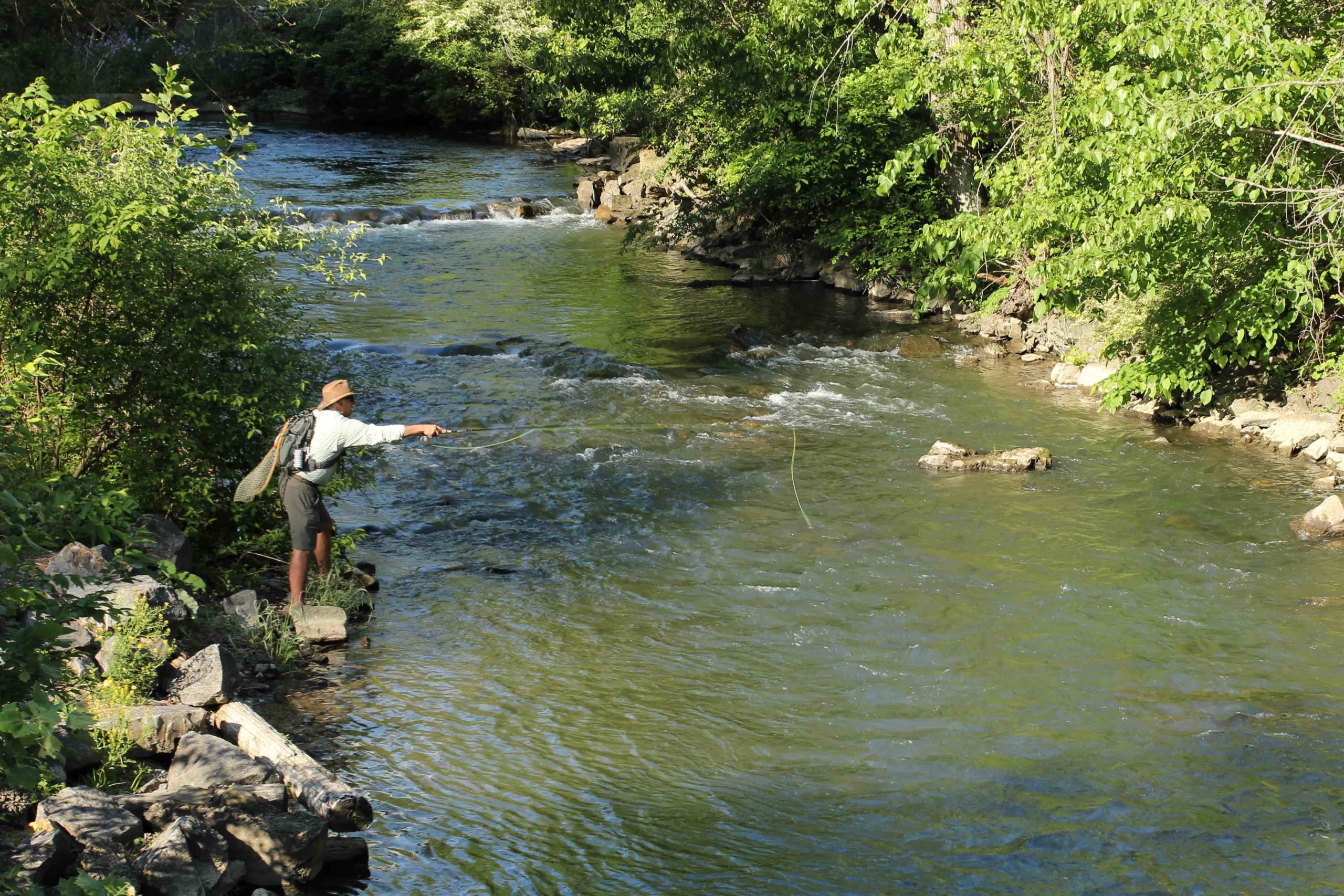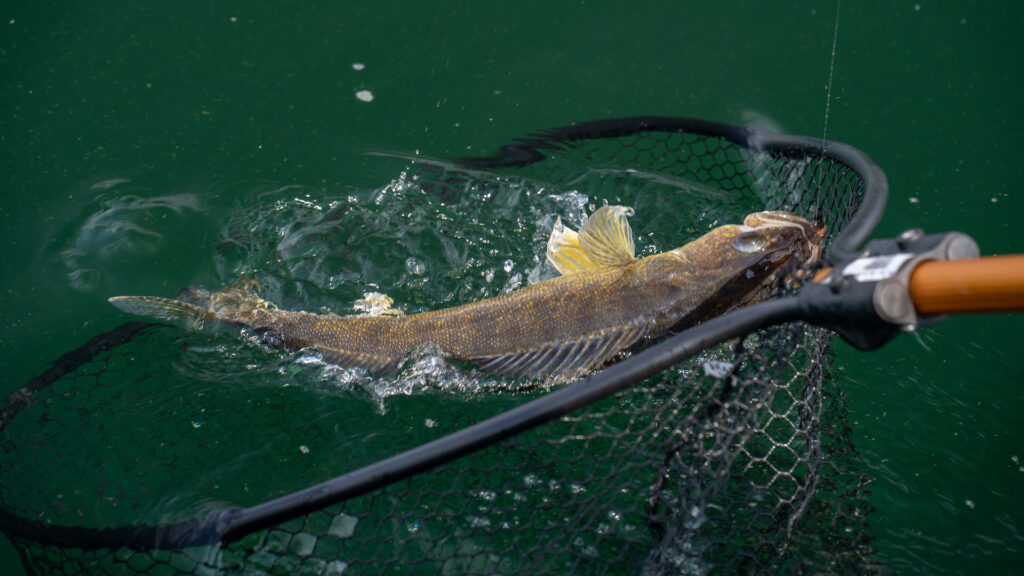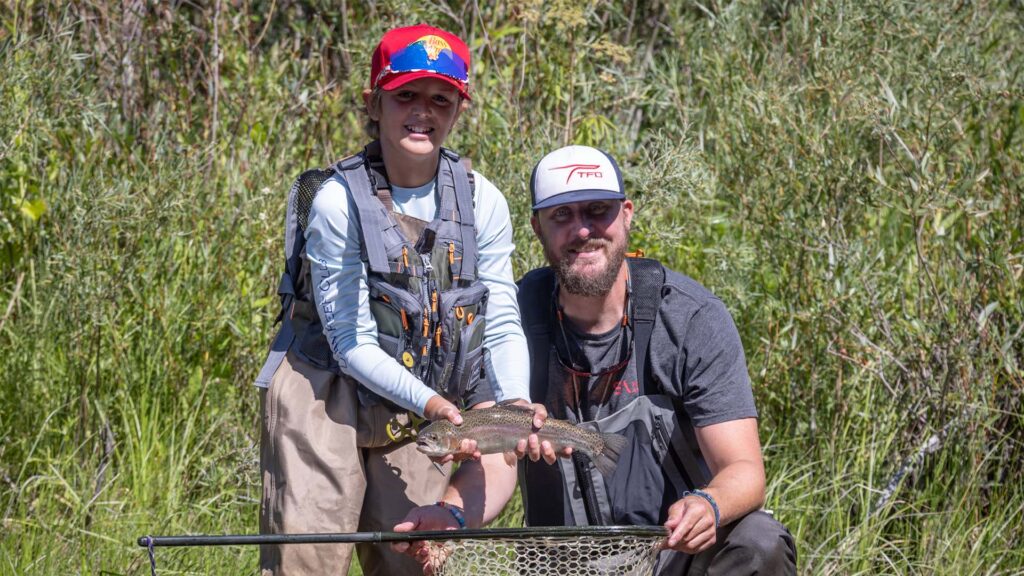“Fly Fishing is a unique avocation,” wrote Vince Marinaro in his 1976 classic book, In the Ring of the Rise. “It is intellectually stimulating and emotionally satisfying. Its many thousands of devotees have the choice of occupying various levels of dedication or indulgence and remaining there, or they can climb new heights according to the depth and width of their personal involvement.” Vince’s description certainly applies to me; I barely seem to meet one challenge in fly fishing before the next one presents itself. But I think I love that aspect of our sport the best. It keeps me engaged and passionate, even decades after I first picked up a fly rod.
One of the reasons our sport continually challenges us lies in its rapidly evolving nature. Not only does our gear and equipment change, but methods and techniques change a lot, too. And no area of our sport has changed more in recent years than nymph fishing. When I first started fly fishing, nymphing meant attaching a floatation style strike indicator to my leader, using a few weighted flies or adding split shot and heaving a water loaded cast from a drift boat. I also used the same technique while wade fishing. It wasn’t until many years later that I realized just how many fish I didn’t catch.
The Changing Face of Nymph Fishing
Someone once told me that I was probably missing more trout than I caught while nymphing below my strike indicator. Skeptical at first, I donned on scuba gear and took a camera took to the depths of the river. The underwater filming proved him right. Because of inefficient strike detection, we miss more fish than we catch. This same realization led others to develop better nymph fishing methods in the 1980s and ‘90s, ones that improve the odds of catching. I dedicated myself to learning these methods and the results amazed me — I caught more fish — a lot more fish!
New tightline techniques evolved because they achieve the two main goals in nymph fishing, namely keeping the flies in the strike zone, which is near the bottom, and improving strike detection by a more direct connection with the flies. Sometimes referred to by the various countries where they originated, Polish nymphing appeared first, soon followed by Czech nymphing. Not to be outdone, the French nymphing method evolved for the use of longer leaders and lighter flies than their euro-nymping cousins. These designations seem confusing at first, but all of these methods bear more similarities than differences and the name ‘tightline’ or ‘contact’ techniques more accurately describe them.
By eliminating floating indicators, properly weighted flies sink to the bottom and resist the pull of the current that wants to lift them from the strike zone. Drifting downstream, the leader must cut through the faster current to allow the flies to drift in the slower water near the bottom. In order to cut through the current, you need to lift the line and leader from the water with a high rod position, so that the leader penetrates the water at a single point rather than lying on the surface. You should feel bottom now and then, which means your flies are in the strike zone. You’ll also feel strikes and catch fish.
Cast upstream or up-and-across, using a tuck cast to let the flies sink rapidly. A tuck cast includes an overpowered forward stroke with an accentuated stop that allows a vertical drop for the flies and an unrestricted decent to the streambed. Keep your casts short- say, around 20 to 30 feet or so, under most circumstances. Beyond that, you won’t be able to lift the line and leader from the water. After the cast, lift the rod slightly to maintain contact with the flies during their decent and then gently lead them downstream. Don’t lead too quickly or you’ll spoil the drift. Use rod position and slack management (with your line hand) to keep the leader and line from the water’s surface. Allow the drift to continue below your position to allow the flies to swing and rise in the current. The rise and lift of the flies at the end of the dead drift mimics natural prey behavior when an insect releases from the bottom in the process of emergence, drifts downstream before turning headfirst into the current to rise to the surface.

Note the high rod position, which is essential to getting a drag-free drift. (Illustration from my book, Nymph Masters: Fly-Fishing Secrets From Expert Anglers, courtesy of Stackpole books.)
I like to feel bottom occasionally to let me know my flies are in the strike zone. If I snag on every drift, though, I’ll switch to a lighter fly. If the drift zips along too fast, I’ll add a bit more weight to slow it down and reconnect with the streambed. I raise and lower my rod tip during the drift to follow the contour of the bottom. For instance, I raise my rod as the drift approaches a submerged rock, and then lower the tip approaching a drop off or depression. This ensures that my flies present to every likely feeding lie.
Work your way upstream when strikes occur during the dead drift phase, but you can also work your way downstream if you get more takes on the swing. Make multiple drifts to ensure that your flies hit every feeding lie in every feeding lane. A firm lift serves as a hookset, but you may have to delay or slow the hookset slightly when the flies are downstream of you at the end of the drift or during the swing. A slight delay lets the trout turn back to its lie and avoids pulling the fly out of the its mouth.
Adding a short segment of highly visible monofilament into your leader makes it more visible and aids strike detection. I often use a combination of yellow or red colors for my ‘sighter’ — the name given to this visual aid —because I can see at least one color under most lighting conditions and against most backgrounds. You’ll feel the more obvious strikes, but subtle strikes often cause only a change in the leader’s angle of penetration or soft tightening of the leader, best seen in the sighter segment.
As you can imagine, you can only hold line and leader above the water to a certain distance away from your position. Beyond that, the line and leader will sag and contact the surface. For this reason, longer leaders developed, since it’s easier to elevate a lighter leader than a heavier fly line. Longer rods also help increase the range of these techniques. With them, you can extend your reach to hit targets not only from farther away, but also reach over the river to target feeding lanes otherwise inaccessible. The longer rod means extended reach to let you catch fish that might otherwise go uncaught-trout in shallow, clear or slow water often spook if you get too close.
The Future of Nymph Fishing
Names like Czech nymphing, Polish nymphing and French nymphing will always be linked to these methods, but more descriptive names like contact nymphing or tightline techniques will become more common. As more anglers realize the effectiveness of these techniques, their use will become widespread. Ten years ago, I rarely saw anyone using tightline methods. Now I see it all the time, and it’s usually the angler who’s catching fish! We’ll also see new techniques as time goes on and also new variations of existing techniques. New products will keep pace with these changes, to serve our changing sport.
Already, several new products meet the needs of today’s nymph angler. For example, thin fly lines such as Cortland’s .022 inch level line or Rio’s Euro Nymph line make it easier to lift and hold the line above the water. Weight forward fly lines with heavy tapered heads tend to sag, making it harder to keep them from lying on the water. Longer, lighter leaders also help, such as Rio’s Euro Nymph Leader. Made from thin diameter fluorocarbon, these leaders effectively cut through the current. And, of course, flies will continue to change; fly designs now include anchor flies- heavily weighted flies with fast sink rates to keep contact with the strike zone. Slim, dense flies now populate my fly box.
The last 10 to 15 years have seen more innovations in nymph rod design than any other time. Long rods offer tremendous advantages to the angler, but holding a long, heavy rod will wear you out and lead to arm and shoulder fatigue. So, it’s more than just length. In fact, three critical factors govern nymph rod design; length, weight and balance. Get the longest rod possible with the lightest overall weight, but maintain a balance point near the handle of the rod. If the balance point is too far beyond the cork, not only will you have to elevate the rod, but you’ll also have to prevent the tip from dropping. You’ll have some achy muscles by the end of the day.
At shows and presentations, I’m often asked what is the ideal nymphing rod. An adjustable rod would be great, especially between the lengths of 9 and 11 feet to offer flexibility and adaptability. Many times I need an 11-foot rod for larger rivers to stretch out over the flow, but prefer a shorter nymphing rod when fishing skinny water, especially those closely guarded with brush, trees or other vegetation. I also like a rod that I can use for dry flies, should a sudden hatch arise. An adjustable rod would need to convert quickly and easily from one length to another to satisfy my needs. I wouldn’t want to re-rig the rod every time I switched lengths. So a long, light, well-balanced and adjustable rod —- is that too much to ask? Add a sensitive tip section to the rod so you can tell bottom ticks from strikes and you’d have a pretty nice rod.
Temple Fork Outfitters brought these very same features to their new nymphing rod. Prior to the introduction of their rod, I’ve purchased nymphing rods from Europe. I’ve been happy with them, but they’re expensive. TFO now offers an affordable solution for the anglers who want to broaden their nymphing game — the new Drift Rod. It has what I need in a nymphing rod.

The Temple Fork Drift rod is designed specifically for nymph fishing and easily converts to a 9′, 10′, 11’6″ or 12′ length.
Embrace change. It’s inevitable. It pushes us to grow and learn. Sometimes it pushes us outside our comfort zone. But that’s makes life so interesting. And every technique we learn makes us a better angler. Vince’s words still ring true today, nearly 40 years later: The next challenge awaits those who thirst for more.
Jason Randall, a TFO national advisory staffer, is a frequent contributor to American Angler Magazine and the author of the ‘Fly Fisher’s Guide’ Trilogy. His latest book, ‘Nymph Masters; Fly Fishing Secrets from Expert Anglers,’ was released by Stackpole/Headwaters Books in 2017.






